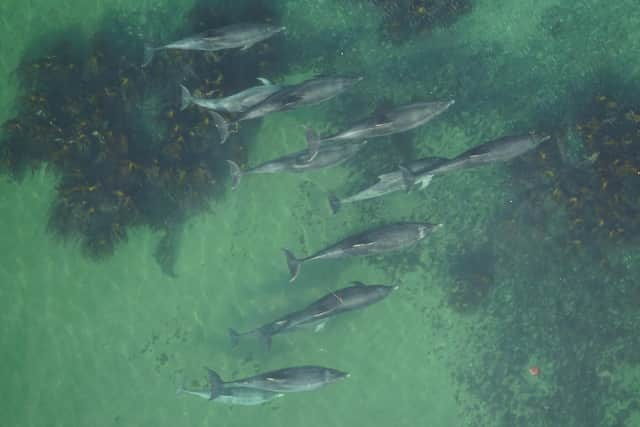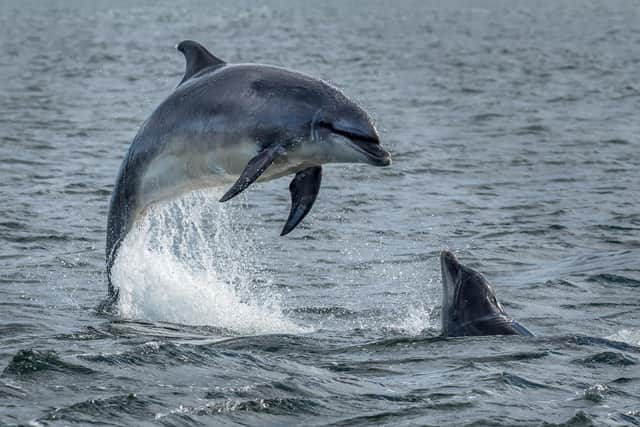Drones to help scientists identify pregnancy in Scottish dolphins and pinpoint survival threats
The study, which focuses on the 200-strong population based around the Moray Firth and the east coast of Scotland, allows researchers to single out females which are expecting calves by examining aerial photos taken from remotely operated craft.
Previously the breeding success of the dolphins was estimated based on sighting of live young, so there were no records of failed pregnancies.
Advertisement
Hide AdAdvertisement
Hide AdThe ground-breaking project is being carried out by researchers at the University of Aberdeen in collaboration with the Marine Robotics and Remote Sensing Laboratory at Duke University in the US.


It will help experts understand the health of the dolphins and help pinpoint the causes of any changes in the population, such as a lack of food.
Dr Barbara Cheney, a research fellow at the University of Aberdeen’s School of Biological Sciences, is based at the establishment’s Lighthouse Field Station in Cromarty.
She said: “The main aim of the study was to explore whether we could remotely determine pregnancy status from aerial photographs taken using an unoccupied aerial system or drone.


“Similar studies have been carried out for larger whales but as far as we know this is the first time it has been done for small cetaceans.
“This is important because reproductive success is key to a population’s growth, but it is particularly challenging to measure in wild populations.
“By using aerial photos this will allow us to routinely monitor changes in reproductive success in this protected bottlenose dolphin population supporting conservation.”
The researchers carried out five boat-based surveys in July and August 2017 and a total of 64 dolphins were identified.
Advertisement
Hide AdAdvertisement
Hide AdJust one of the 15 dolphins whose pregnancy status was known was incorrectly identified as being not pregnant.
“We know that reproductive failure has been linked to harsh environmental conditions, pollution and naturally occurring toxins but previously we have only been able to estimate the impact in populations where animals are easy to capture or remotely sample," Dr Cheney added.
“This study will provide us with a wealth of new data to further improve our knowledge and understanding of reproductive success in bottlenose dolphins.”
A message from the Editor:
Thank you for reading this article. We’re more reliant on your support than ever as the shift in consumer habits brought about by coronavirus impacts our advertisers.
If you haven’t already, please consider supporting our trusted, fact-checked journalism by taking out a digital subscription.
Comments
Want to join the conversation? Please or to comment on this article.
